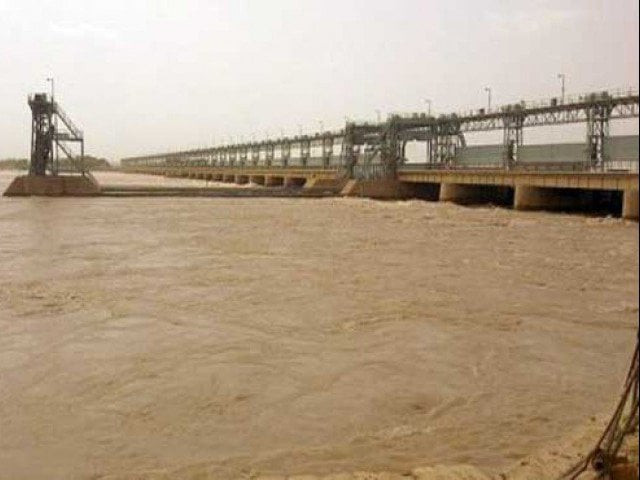Redirecting floodwater: WAPDA rebuffs Sindh’s call to raise crest level
Describes request as unacceptable because flood canal is ready

Describes request as unacceptable because flood canal is ready. PHOTO: FILE
The Water and Power Development Authority (Wapda) has rejected the Sindh government’s call to raise the sill level of the Rainy Canal Project, saying the request was ‘unacceptable’ because the canal was ready to operate.
Wapda placed a report on the project before the top court in a matter related to implementation of the recommendations made by the Commission on Flood Inquiry 2010.
Union closes WAPDA to protest privatisation
The Rainy Canal Project is one of the mega projects of the water sector that was launched by the then president of Pakistan in October 2002. It will utilise the surplus floodwater of the Indus River when the discharge exceeds 250,000 cusecs.
Rainy canal is proposed as a flood canal off-taking from the left side of the Indus River upstream of the Guddu Barrage.
The existing Ghotki Feeder is the perennial canal which is also off-taking from the left side of the Guddu Barrage adjacent to the rainy canal.
According to the report, the irrigation department believes that since the crest level of the head regulator of the rainy canal is 244 feet — which is the same as the Ghotki Feeder —irrigation supplies to the feeder would be reduced during normal operation, resulting in problems for the farm owners depending on the feeder.
Moreover, the provincial department would be unable to fulfil the requisite supplies, especially during shortage of water in the Indus River.
Wapda, however, argues that the demand for raising the crest level of the project is unacceptable when the canal is ready for operation.
The rainy canal is providing the facility to supply water for defence purposes, and there is official correspondence from the Pakistan Army to the Sindh Irrigation Department as well as Wapda, demanding that there would be water requirement for defence purposes from time to time, says the water authority.
Therefore, it adds, Wapda and the defence authorities do not agree to raising the sill level. “If the irrigation department still wants to raise the level, however, it can do so on its own after taking over the project.”
The great divide: Floodwater outside, no drinking water inside
The report says the first phase of the project was finalised in June 2014, but the second phase has yet to be completed.
Meanwhile, a three-judge bench of the Supreme Court, headed by Justice Mian Saqib Nisar, disposed of the case.
Published in The Express Tribune, January 31st, 2016.



















COMMENTS
Comments are moderated and generally will be posted if they are on-topic and not abusive.
For more information, please see our Comments FAQ